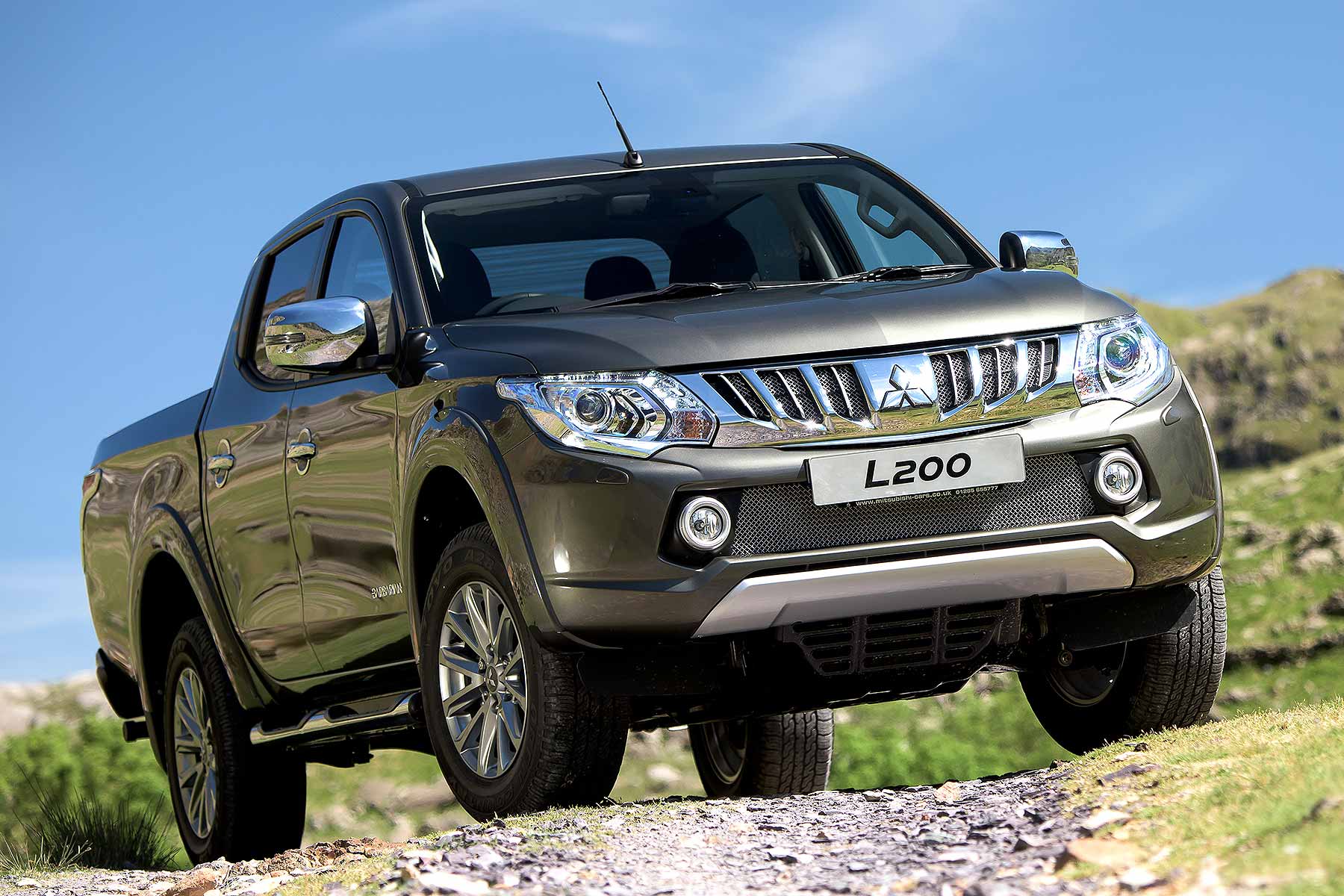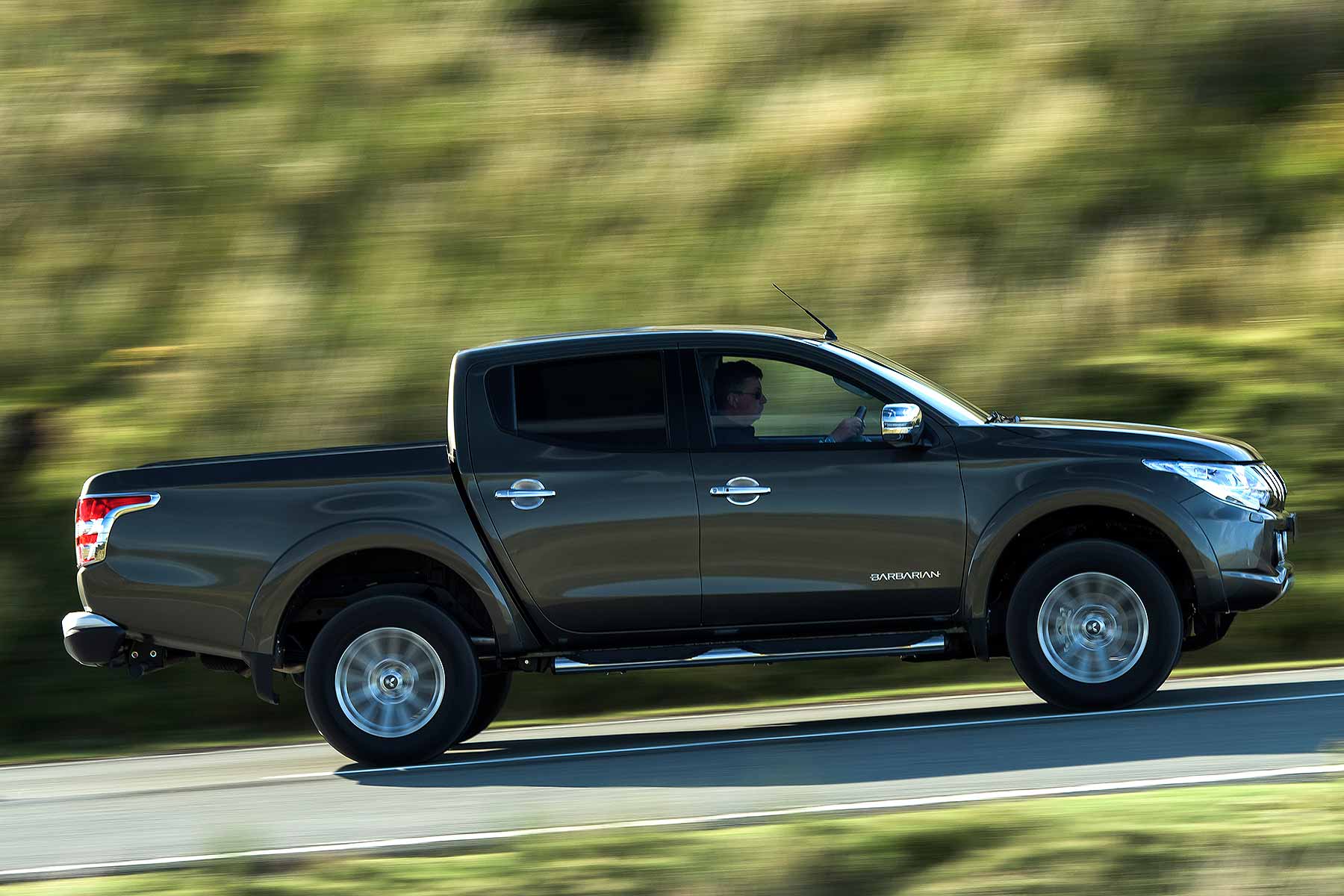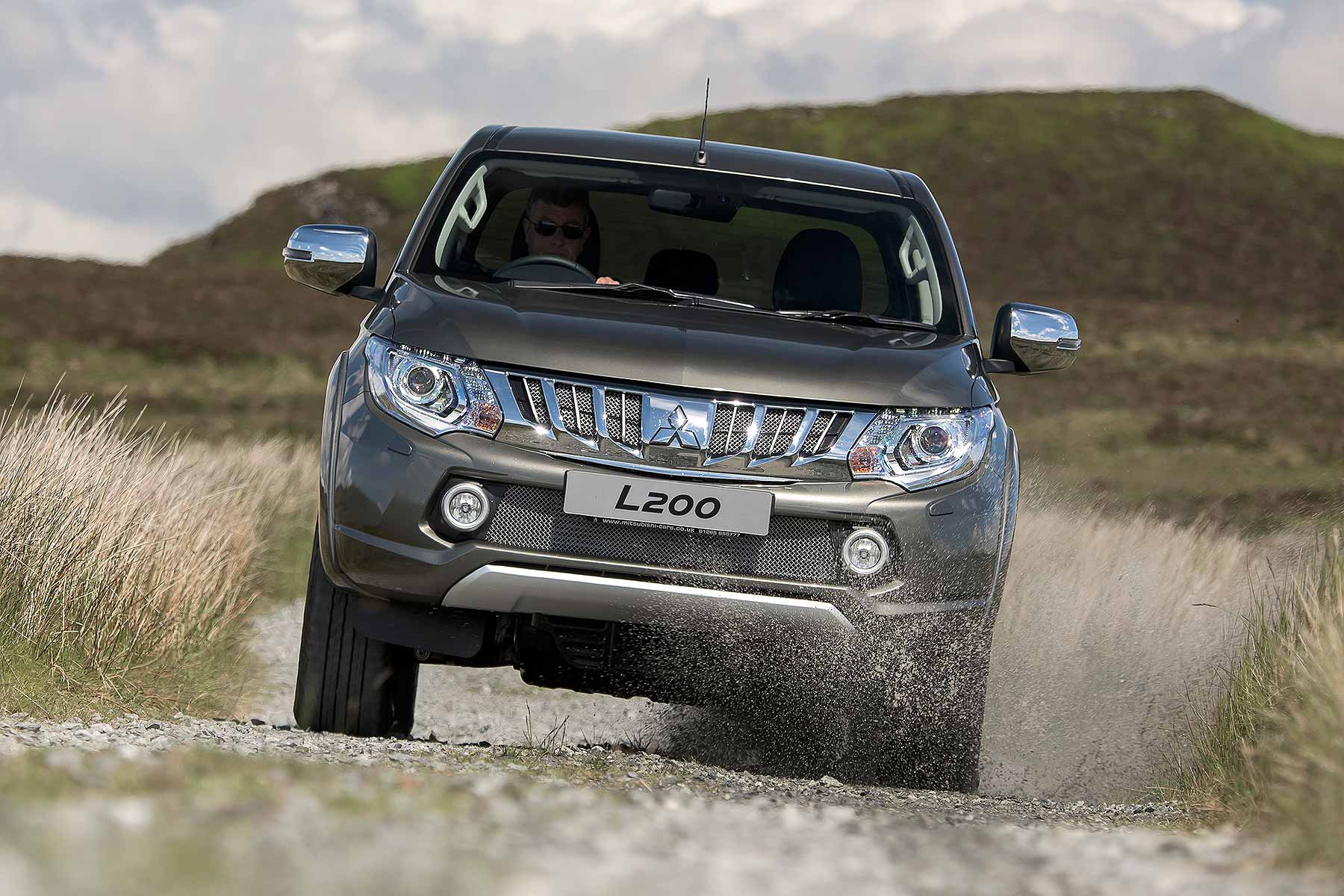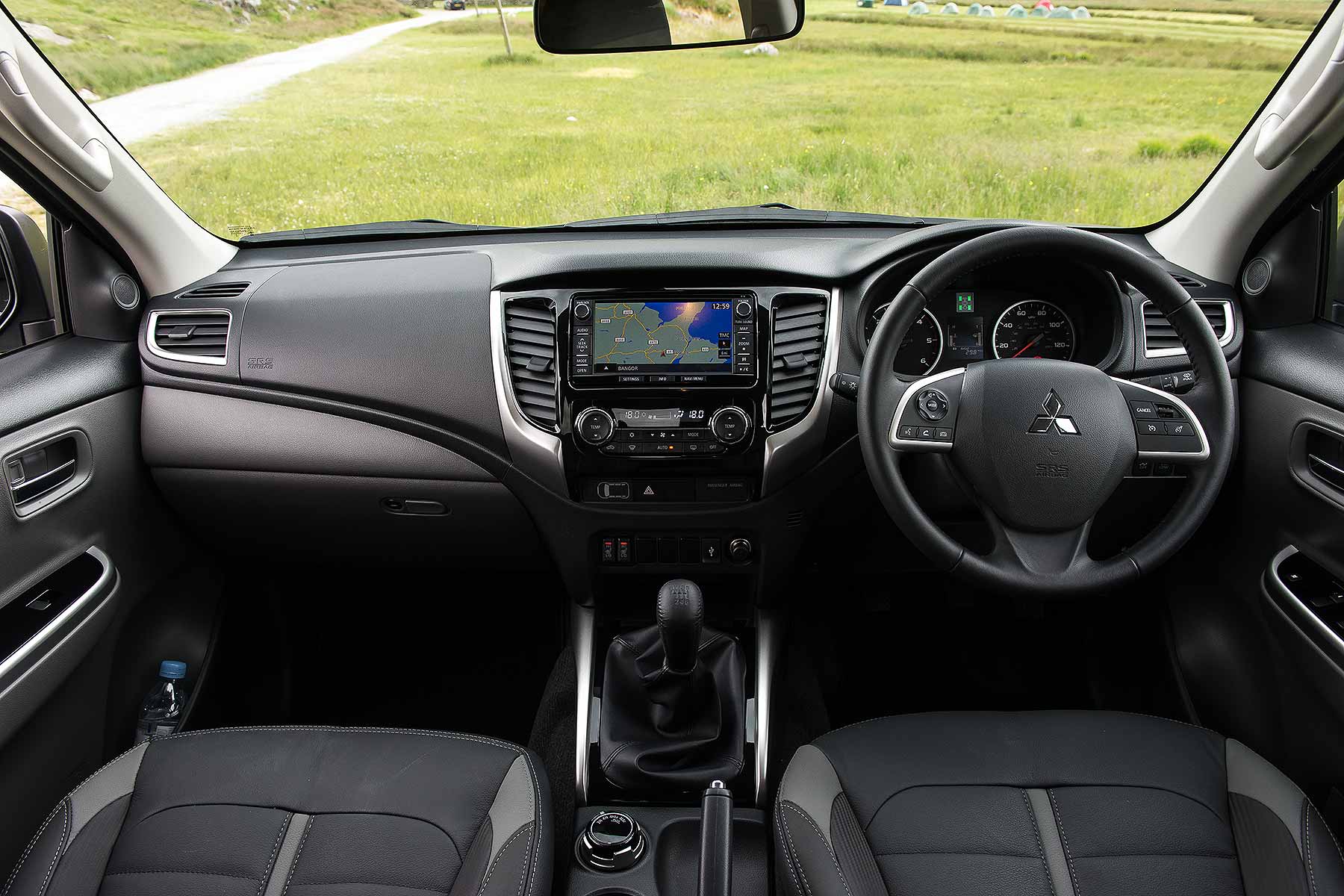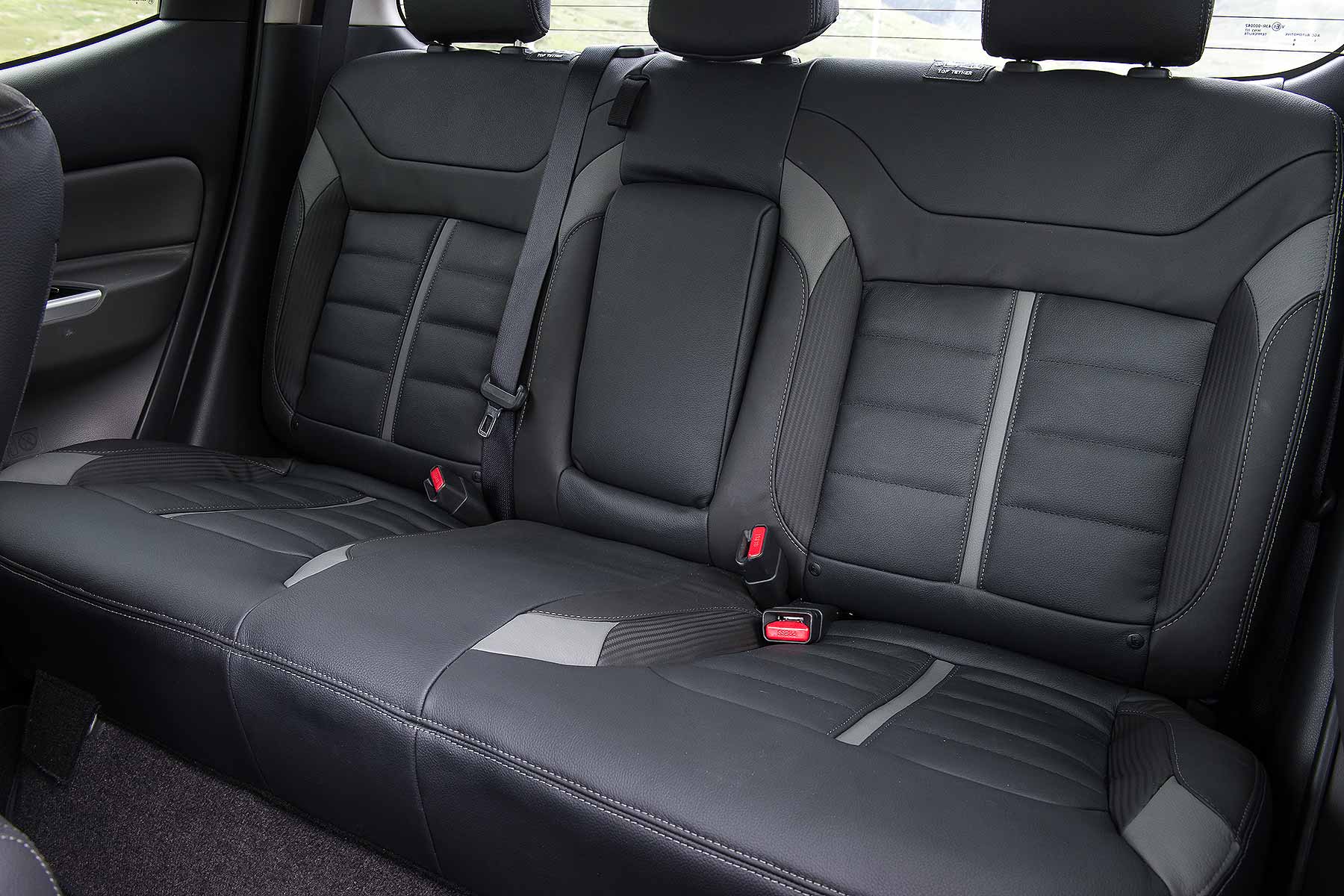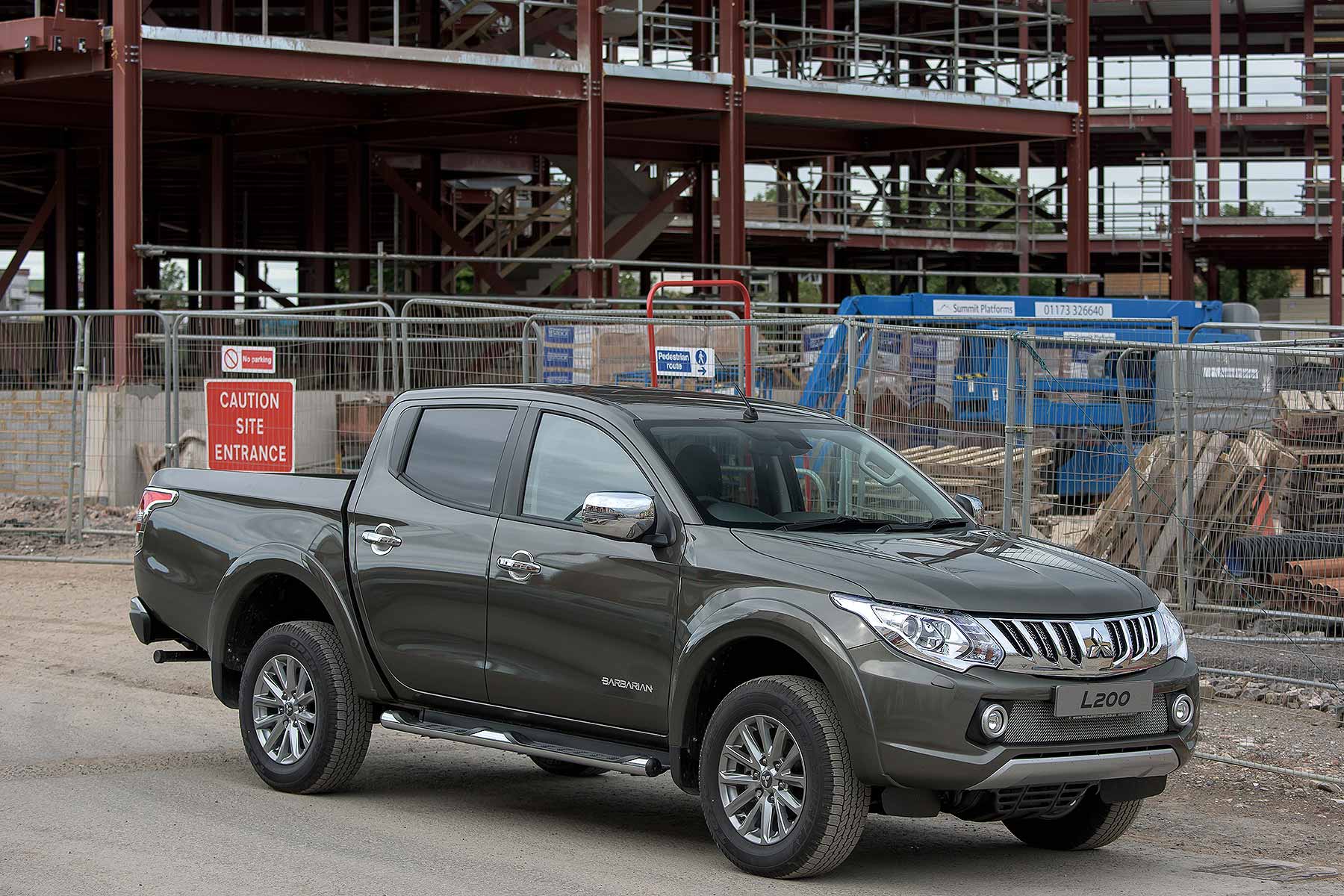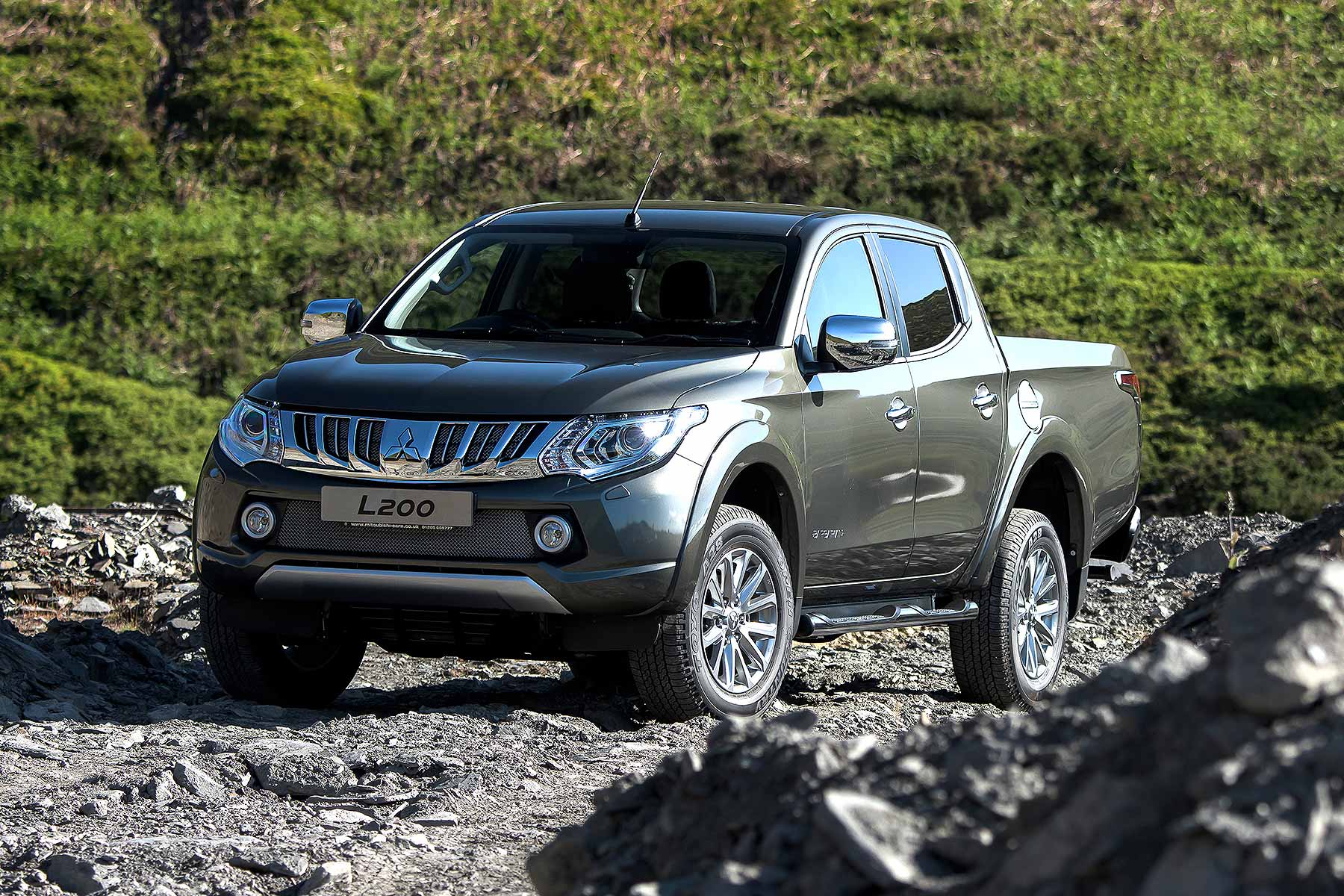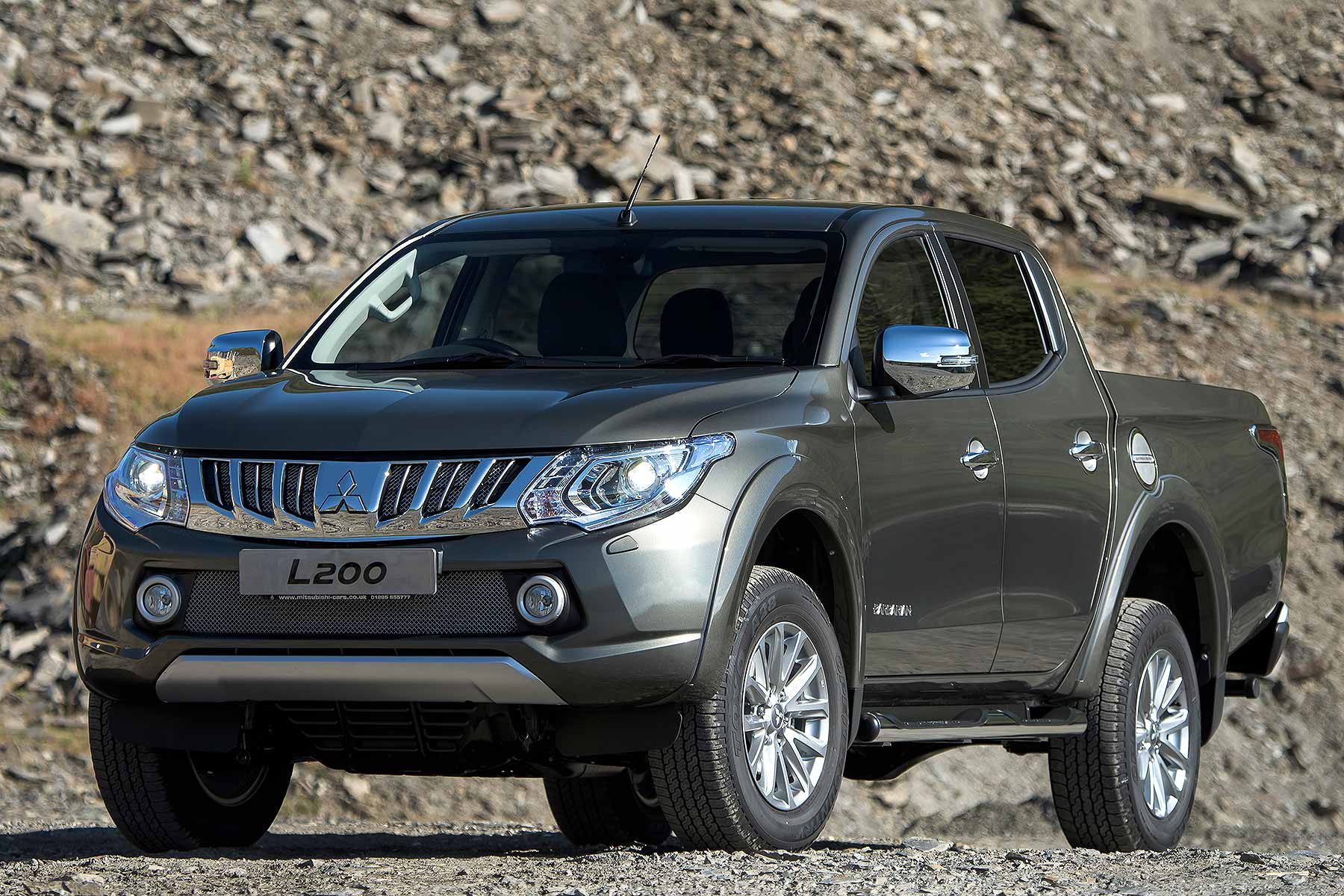 Mitsubishi moves the double cab sector on significantly with the new L200. Highly accomplished in all areas, it now leads the sector and might even tempt a few SUV owners to move across.
Mitsubishi moves the double cab sector on significantly with the new L200. Highly accomplished in all areas, it now leads the sector and might even tempt a few SUV owners to move across.
Mitsubishi is going with the strapline ‘showing the world how it’s done’ to promote the all-new L200 when it launches in September 2015. “It’s a bit big-headed,” admitted UK MD Lance Bradley. But the brand also believes it’s got every right to shout about its achievements.
The L200 pickup, sold these days in four-door double cab guise, has for years been THE double cab to have. At one point, it commanded 70% of the total marketplace – that’s quite staggering class domination. Sales swelled due to the early 2000 company car tax break boom and, although they faded a little after 2008, they’ve recently been growing once again (17% last year, 23% the year before).
And that’s with the dated 2006 Series 4 model. With this new Series 5, Mitsubishi expects big things from a vehicle that makes up 1 in 7 dealer sales. The firm reeled off a list of stats it claims class leadership for: fuel economy, emissions, performance, 4WD tech, safety, utility, manoeuvrability, driving dynamics… never before, said Bradley, has a new car been launched that leads the class in so many ways.
Visually, you might miss the fact that it’s the new L200 at first; it’s clearly derived from the look of its predecessor. Look more closely, though and you’ll see the lines are more tightly sculpted, the front more modern and, with upper-grade trim’s daytime LED running lights, appreciably more distinctive. The bulging strakes above front and rear wheelarches is also cool.
Mitsubishi is selling it with an all-new, all-aluminium 2.4-litre DI-D diesel engine, the first in the sector to have variable valve timing. Producing 151hp or 178hp, it’s offered with a new six-speed manual or a six-speed automatic with sector-first paddleshifters.
Even the base car has air con, alloys, cruise control and seven airbags. The new Titan adds DAB, keyless go, 17-inch alloys, privacy glass and DAB for £1,000 more and the volume Warrior has so much equipment, less than 10% of sales are likely to be of the range-topping Barbarian, even though the small businesses who make up the core of L200 sales usually default to the top-spec variant.
Prices start from £19,749 plus VAT (both fleets and small businesses are VAT exempt, so there’s no point in quoting it), or £20,749 for that Titan and £23,049 for the Warrior. By car standards, it looks an absolute bargain. Mitsubishi is also claiming next-generation dynamics, which will make every other double cab seem dated and old fashioned.
We’ve heard such claims before, though. They’re bold, but not always borne out. Can the new Mitsubishi L200 live up to them?
2015 Mitsubishi L200: on the road
Double cabs are usually harder work than regular SUVs to drive. They have rugged ‘separate chassis’ construction, that’s great off road but a bit old fashioned on it. They also have rear leaf springs, the sort of tech cars from the 1960s were fitted with before more modern solutions came along. It means they are, yes, a bit more truck-like than normal SUVs.
The L200 is the least truculent double cab ever though. It’s a big step on, immediately apparent from the quieter and less clattery engine, much closer and snapper gearchange (slick, swift and now almost entirely notch-free), lighter and easier clutch and steering that’s still a bit low geared compared to normal cars but far quicker and less twirly than it was.
The rugged, tough feel behind the wheel remains (that’s why people buy them, after all), but it’s less lead-footed and awkward to drive. You could even call it sleek at low speed; certainly it’s easier to drive slowly and smoothly, important given the conditions most will be used in. Compared to the old one, it feels like a smooth-running Rolls-Royce.
The ride is also a big advance. It’s much quieter and more capable of shrugging off potholes without noise or shudder; initial damping is impressive and, while the underlying ‘shake-shudder’ disturbance typical of double cabs is still there, it’s much reduced and better isolated.
It’s well damped at higher speeds, with less body float and squirm, and more controlled lean in corners. Tighter, sharper steering makes for better handling as well, with a more direct front end and lighter-weight flow through bends. You can both drive it faster yet with more confidence: it’s hardly chuckable now, but won’t terrify you when roads get twisty.
Power deliver is less switch-like than it was. The motor is not as flat and lifeless ‘off boost’ and more progressive and responsive when the turbo kicks in (from around 1,500rpm). The refinement and smoothness is a boon too: it is a bit noisier than a regular SUV, but far less so than before, and it’s only above 3,500rpm that you’re reminded of the industrial clatter normally experienced in double cabs.
It’s not quite now a competitor to a conventional SUV such as a Land Rover Discovery Sport, of course. Start throwing it about and you’ll quickly find the tyre-squealing limits; be heavy on the power and steering at low speed and the rear end will start jumping around as the tyres spin away the power.
It’s a heavier and more industrial machine, which will still lean if pitch it into corners hard and display a shuddery ride if you drive it quickly (and unladen) down really broken roads. The brakes perhaps aren’t as punchy as a road-going SUV either.
That’s by SUV standards, though. By double cab standards, it’s a massive leap on, and better than anything else out there. That it gets so close to being compared to an SUV says it all.
2015 Mitsubishi L200: on the inside
The L200 looks similar at first inside too, but you’ll quickly appreciate the fundamental differences. For starters, the dash has more depth and so, with a more car-like driving position and less of a ‘sitting on the floor’ feel, is much more SUV-like.
The seats are more supportive and it’s a rare double cab to have a rake AND reach-adjust steering wheel, so you can set it really close and comfortable. You step up very high into it but you also sit commandingly high, and details such as the huge door mirrors help the view out.
As ever with double cabs though, it’s very tricky to reverse. The hidden length of the rear deck can’t be engineered out, so Mitsubishi vets around it with rear view cameras – pity they’re not standard on the basic cars.
The overall dash design is more modern, with a sleek and high-mounted touchscreen on most models (it includes DAB radio) and climate control on all but base cars. Plastics are hard but the finish is less shiny, so it all looks much better quality. Dials are easy to read and the sat nav that’s standard on Warrior and above is as clear to use as the steering wheel buttons and electronic four-wheel drive shift knob.
In the rear, it’s even trickier to step up into, but there’s much more space there now, particularly kneeroom and footroom. The backrest isn’t pressed bolt-upright against the rear bulkhead, further enhancing comfort, and it’s only a slightly flat rear bench, leaving occupants feeling a bit perched, that detracts from the SUV-esque feel.
Refinement has improved considerably. We did a direct comparison between new and old L200: the latest car has far less engine noise and clatter, less road noise, better isolation of bumps and bangs, less wind noise (it only starts to intrude above 75mph), fewer creaks and an overall sense of being smoother, sweeter and more SUV-like.
It genuinely can now pass as a refined, well-stocked alternative to a conventional SUV, and that’s not something any other double cab can claim.
Finally, the rear deck. It’s 1,470mm long and, coincidentally, 1,470mm wide, 475mm deep (15mm up on before) and will carry a tonne in weight (and tow a further 3.1 tonnes on top). Mitsubishi offers a range of trick load covers that make it a more usable space – they turn it into a lockable boot as well. As standard, it isn’t: no point fitting a lock when people could just lift the stuff out anyway…
2015 Mitsubishi L200: running costs
Mitsubishi proudly shows us one fact during the press conference: the L200 is more economical than any other double cab on sale. By how much? Between 11% to 47% – a potentially huge degree, in other words.
It averages a car-like 42.8mpg and a bigger 75-litre fuel tank pushes the driving range up to nearly 700 miles. Service intervals are better than they were, at 12,500 miles or 1 year, although they do still seem a bit short by car standards.
New safety systems will help reduce insurance premiums. The L200 is the first double cab to have a lane departure warning system, and there’s a speed limiter plus hazard lights that automatically flash under heavy braking. Super Select 4WD is another traction-boosting boon.
CO2 emissions are the lowest in the class, with up to a 33% advantage over rivals. Mitsubishi MD Bradley reckons this could pay dividends in the future if the government launches a CO2-based tax scheme for commercial vehicles – currently, they’re the only major vehicle sector that’s exempt from this.
2015 Mitsubishi L200: verdict
Mitsubishi promised a stepchange with the new L200, but we’ve heard that before. Would you believe, though, it’s right. The new L200 really is that much of a move on – importantly, in all the areas that matter to road-biased small business users.
It’s quieter, smoother, faster, greener. It’s easier to drive, nicer to drive, more composed to drive. The ride is more comfortable, stability is more planted and refinement more SUV-like. It’s tough – confidently so when you’re shrugging off speed bumps like they’re not there – but not truculent.
The interior is smarter, quieter and packed with more tech, and comfort is such that the family won’t mind if you start taking them out in the small business do-it-all at the weekend, instead of the compact SUV they’re used to. In so many ways, it’s a winner.
They might even like the L200 so much, it could replace the family car; no double cab has ever offered so few compromises to quite justify that statement before.
2015 Mitsubishi L200: specifications
Engine: 2.4-litre four-cylinder turbodiesel
Price: £19,749 – £23,799 (plus VAT)
Power: 151 – 178hp
Torque: 280 – 317 lb ft (Nm)
0-62mph: 10.4 – 12.2 seconds
Top speed: 105 – 111mph
Fuel economy: 42.8mpg
CO2 emissions: 173g/km (169g/km 151hp 4Life)
ALSO READ
Audi A4 prototype review: 2015 first drive
